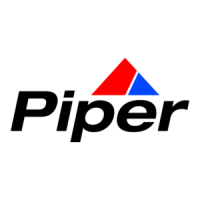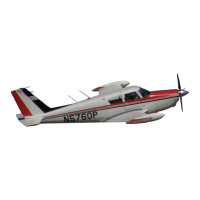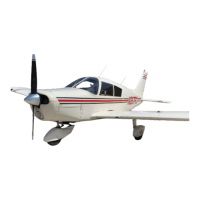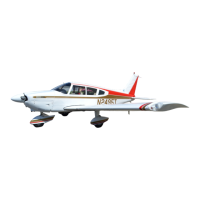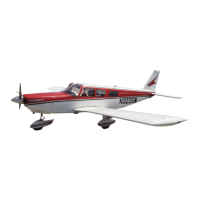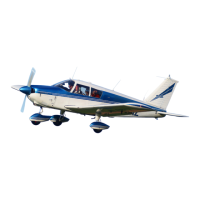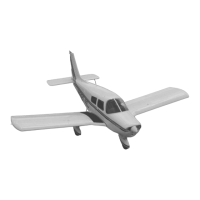Do you have a question about the Piper COMANCHE 260 and is the answer not in the manual?
Details of the aircraft's engine and propeller, including horsepower, RPM, bore, stroke, and dry weight.
Key performance metrics such as take-off distance, climb speed, service ceiling, and top speed.
Information on gross weight, empty weight, and useful load for different configurations.
Details on fuel capacity, unusable fuel, and required aviation fuel grade.
Specifications for the baggage area, including capacity and door size.
Physical dimensions of the aircraft, including wing span, length, and height.
Details on landing gear components like wheel base, tread, tire pressure, and tire size.
Description of the engine mount, cowl, exhaust system, oil cooler, and propeller.
Explanation of carburetor or fuel injection induction systems and fuel flow measurement.
Information on the sheet aluminum construction and wing airfoil section.
Details on steerable nose gear, retraction mechanism, safety features, and brakes.
Description of the three-control system, stabilator, trim, and electrically operated flaps.
Overview of fuel cells, pumps, selector, strainer, and fuel quantity indication.
Details on the 12-volt electrical system, including alternator, battery, and circuit breakers.
Information on cabin heating, defrosting, and ventilation controls and air sources.
Description of flight and engine instruments, gyro instruments, and radio installations.
Details on the vacuum pump, gauge, and regulator for gyro instruments.
Information on the baggage area capacity, access, and securing provisions.
Description of the adjustability and removal process for front and rear seats.
Details on the aluminum sheet finishing, priming, and exterior coating for durability.
Outline of the essential safety procedure instructions for preflight inspection.
Step-by-step guide for starting the engine when equipped with a carburetor.
Step-by-step guide for starting the engine when equipped with fuel injection.
Procedures for warming up the engine and performing ground checks after starting.
Instructions for performing a normal take-off, including flap settings and gear retraction.
Information on stall behavior and control effectiveness at stalling speeds.
Guidance on best rate of climb, best angle of climb, and enroute climbing speeds.
Recommendations for cruising power settings, speeds, and mixture control.
Checklists and techniques for approaching and landing the aircraft.
Steps for safely shutting down the engine after landing and parking.
Instructions for handling critical situations such as manual gear extension and engine failure.
Guidance on securing the aircraft on the ground and storing the tow bar.
Helpful operational techniques and considerations for the Comanche.
Instructions for operating communication and navigational radio equipment.
Chart detailing take-off distance over a 50 ft barrier under various conditions.
Chart showing ground run distance required for take-off under different conditions.
Graph illustrating speeds for best rate and best angle of climb.
Chart showing climb rate based on standard altitude and aircraft weight.
Graph relating true airspeed to standard altitude at various power settings.
Chart indicating the aircraft's range based on standard altitude and fuel supply.
Chart detailing landing distance over a 50 ft barrier under various conditions.
Chart showing landing ground roll distance with maximum braking effort.
Chart to determine standard density altitude from existing temperature and pressure altitude.
Table providing recommended manifold pressure and RPM for power settings.
Table providing recommended manifold pressure and RPM for power settings.
Graph showing fuel consumption at part throttle for the IO-540-D engine.
Guide on reading and interpreting the fuel flow indicator for the IO-540-D.
Recommended tire pressures for nose and main wheels, and advice on tire wear.
Instructions for accessing, checking, and charging the aircraft battery.
Information on brake fluid, brake block wear, and disc/lining removal.
Guidance on jacking the aircraft, servicing landing gear oleos, and using service kits.
Specifications for minimum fuel octane and recommended engine oil grades by temperature.
Steps for leveling the aircraft for weighing and checking flight surface positions.
Procedure for cleaning the induction air filter as recommended by the manufacturer.
Instructions for cleaning plexiglass windows and removing minor scratches.
Information on the location of the serial number plate for service reference.
Details on cleaning fuel screens, carburetor injectors, and fuel strainers.
